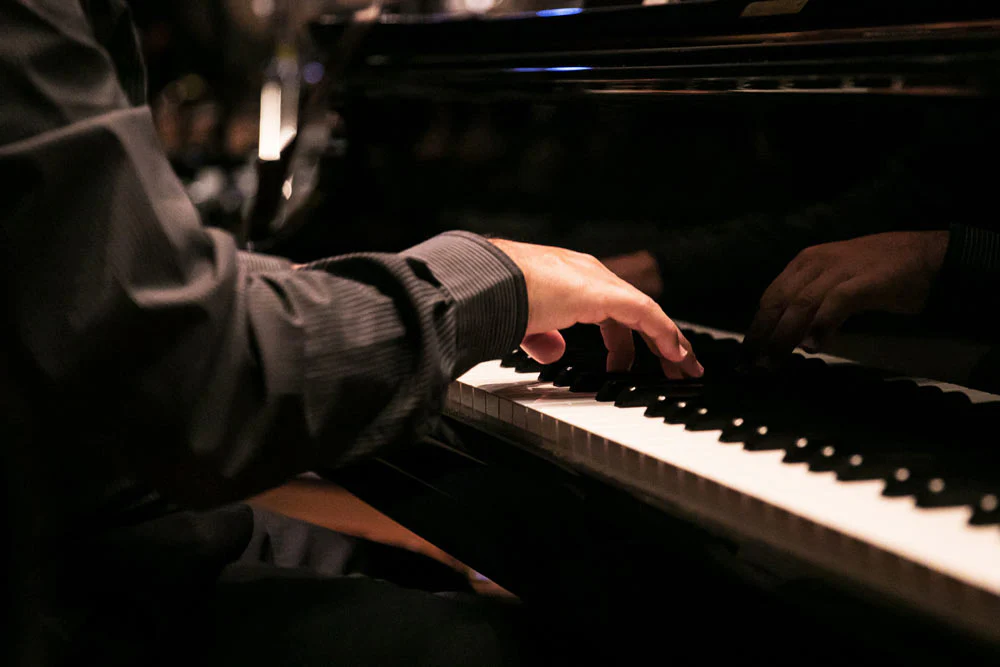
Get Expert Guidance
Find Your Perfect Piano
Baldwin Model M Satin Walnut Grand Piano w/ bench -Brand: Baldwin -Model: Model M -Serial # 247382 -Finish: Satin Walnut -Condition: Very Good...
View full detailsSojin Polished Mahogany Baby Grand Piano -Brand: Sojin -Serial #: G024349 -Finish: Polished Mahogany -Condition: Very Good Built in 1964 but late...
View full detailsYoung Chang TG-150 Polished Baby Grand Piano -Brand: Young Chang -Model: G-150 -Serial #: G062850 -Finish: Satin Ebony -Condition: Very Good Cons...
View full detailsKawai 5'11" GX-2 BLAK Polished Ebony Grand Piano w/ QRS System -Brand: Kawai -Model: GX-2 BLAK w/ QRS System -Serial #: 2772458 -Finish: Polished ...
View full detailsYamaha GB1 Grand Piano ' Polished Mahogany -Brand: Yamaha -Model: GB1 -Serial #: J2110291 -Finish: Polished Mahogany -Condition: Very Good Ori...
View full detailsKawai RX-5A Polished Ebony Chamber Grand Piano -Brand: Kawai -Model: RX-5A -Serial #: 2420181 -Finish: Polished Ebony -Condition: Excellent - Reco...
View full detailsKawai RX-3A Polished Ebony Professional Grand Piano -Brand: Kawai -Model: RX*3A -Serial #: 2422158 -Finish: Polished Ebony -Condition: Excellent -...
View full detailsYamaha C6 7' Conservatory Collection Polished Ebony Grand Piano This piano has been reconditioned This gently played reconditioned Yamaha C6 Cons...
View full detailsKawai 6'1" GS-30 Grand Piano -Brand: Kawai -Model: GS-30 -Serial # 1317177P -Finish: Polished Ebony -Condition: Very Good Over the past 90 ye...
View full detailsYoung Chang 5'2" G157 Grand PianoModel G157Size: 5'2"-Serial #G082138-Finish: Satin Ebony-Condition: Very GoodThe Young Chang 5'2" G157 Grand Piano...
View full detailsWURLITZER 5'1" GRAND PIANO MAHOGANY POLISH #68188 BRAND: Wurlitzer SIZE: 5'1" Grand FINISH: Mahogany Polish SN: 68188 Frank Rudolph Wurlitzer ...
View full detailsSchafer & Sons VS-41 Polished Ivory Console Piano -Brand: Schafer & Sons-Model: VS-41-Serial #: 161179-Finish: Polished Ivory-Condition: Ve...
View full detailsHoward Baby Grand Piano in Medium Light Satin Walnut -Brand: Howard -Serial # 217144 -Finish: Satin Walnut -Condition: Good After being thoroughl...
View full detailsSchumann G-82 Polished Mahogany Grand Piano-Brand: Schumann-Model: G-82-Serial #: 8511431-Finish: Polished Mahogany-Condition: ExcellentConsidered...
View full detailsStory & Clark DG10559 Grand Piano ' Polished Ebony-Brand: Story & Clark-Model: DG10559-Serial #: 2002123016-Finish: Polished Ebony-Conditi...
View full detailsPearl River 5'3" GP160 Polished Ebony Grand Piano-Brand: Pearl River-Model: GP160-Serial #: 1555565-Finish: Polished Ebony-Condition: ExcellentPea...
View full detailsBaldwin Baldwin 4'10" Baby Grand-Brand: Baldwin-Model: B1-Serial #1290776-Finish - Satin Walnut-Condition - GoodBaldwin baby grand piano, 4'10" lo...
View full detailsBaldwin Model L Satin Ebony Grand Piano w/ Player System -Brand: Baldwin -Model: Model L -Serial # 173550 -Finish: Satin Ebony -Condition: Ver...
View full detailsBaldwin 5'8" Model R Satin Ebony Grand Piano w/ bench -Brand: Baldwin -Model: Model R -Serial # 330070 -Finish - Satin Ebony -Condition - Very...
View full detailsBaldwin 511 Satin Walnut Upright Piano -Brand: Baldwin -Model: 511 -Serial # 1372054 -Finish: Satin Walnut -Condition: Very Good In their pri...
View full detailsBaldwin 5'8" Model R Satin Ebony Grand Piano w/ bench -Brand: Baldwin -Model: Model R -Serial # 330070 -Finish - Satin Ebony -Condition - Very...
View full detailsBaldwin 5'8" R226 Polished Walnut Grand Piano -Brand: Baldwin -Model: R226 -Serial # 305920 -Build Date: 1991 -Finish - Polished Walnut -Cond...
View full detailsBaldwin 5'2" Model M Satin Walnut Grand Piano -Brand: Baldwin -Model: Model M -Serial: 253751 -Finish: Satin Walnut -Condition: Very Good At ...
View full detailsBaldwin 5'8" Model R 226 Grand Piano -Brand: Baldwin -Serial # 378211 -Finish: Polished Cherry -Condition: Very Good In their prime, Baldwin p...
View full details{"one"=>"Select 2 or 3 items to compare", "other"=>"{{ count }} of 3 items selected"}
